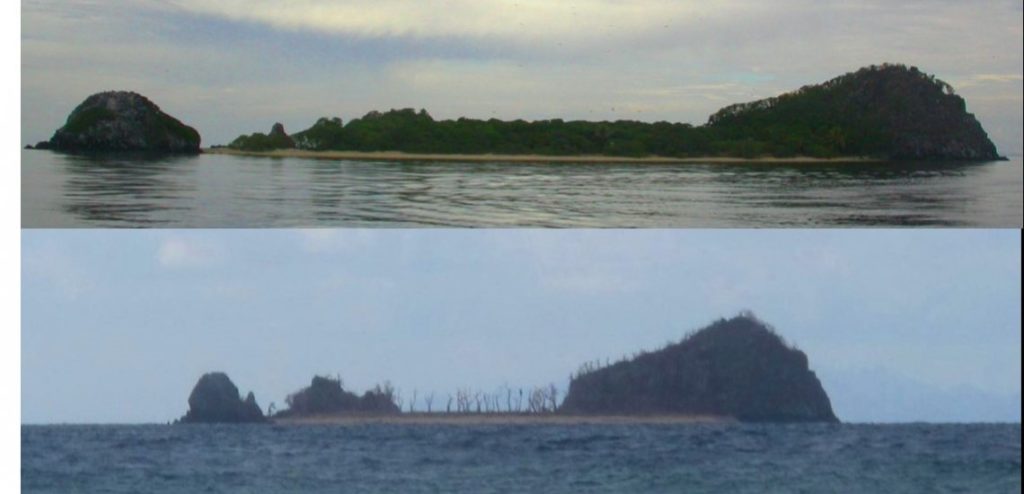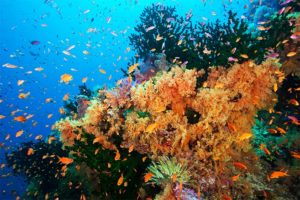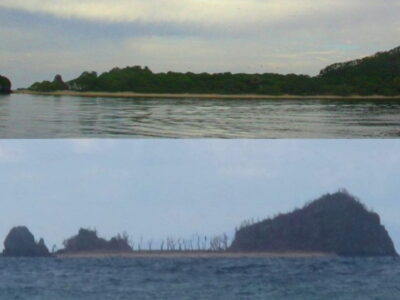One picture is worth a thousand words. In this case two pictures – a before and after of Vatu Island, or Vatu-i-Ra, one of the 28 internationally important bird areas recognized by BirdLife International for Fiji.

Vatu-i-Ra is a small uninhabited island approximately 100 meters by 300 meters. It is known locally as `Bird Island’ because of the large breeding colonies of seabirds on the island. Vatu-i-Ra is home to nine species of breeding seabirds. Black Noddies (Anous tenuirostris) have the largest population of more than 20,000 pairs, identifying the site as globally important for this congregatory breeding species and so registering it as an IBA. In 2011, BirdLife’s Fiji Programme established an acoustic attraction and artificial nesting boxes on the island and has been maintaining the system to the current date. This was established to attract and recruit threatened seabirds that are known to fly across the Vatuira passage. Land birds such as Barn owls (Tyto alba) and Peregrine Falcon (Falco peregrinus) have been observed on the island but are not considered residents. The island also hosts the Hawkesbill turtle (Eretmochelys imbricata) during breeding season and is home to the Fiji endemic pygmy snake-eyed skink (Cryptoblecephalus eximius).
In 2006 BirdLife conducted an operation to remove Pacific rats (Rattus exulans), the only rat species present on the island.
The island and the marine IBAs are managed by the Nagilogilo Resource Management Committee, which was formerly the Senibama Site Support Group that was formed in 2010. The Committee and its volunteers from the community, with the support of BirdLife and NatureFiji/MareqetiViti have been monitoring terrestrial species and carrying out invasives control on the Island since 2007. They coordinate the monitoring programme (following the rat eradication) and investigate sustainable livelihood opportunities for their community. Other activities they have undertaken include, land water protection, economic-livelihood and other incentives, education awareness, biosecurity training, climate change adaptation programmes and conservation planning.
Cyclone Winston is a disaster for the communities. And a disaster for nature. In such circumstances it is easy for relatively stable populations of birds and other animals to become endangered. Once the initial disaster relief phase is over and the people are safe and housed again, we will be looking for support to help the committee members to pick up their nature protection role again and to start to help the recovery of nature in the face of such a disaster.


 Sandalwood nurseries to improve livelihoods of local Pacific communities managing Important Bird Areas
Sandalwood nurseries to improve livelihoods of local Pacific communities managing Important Bird Areas